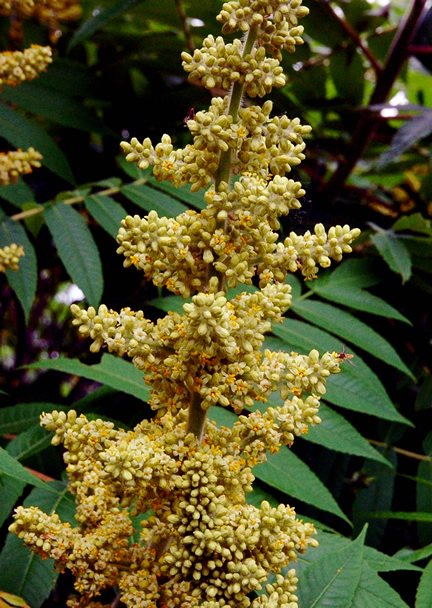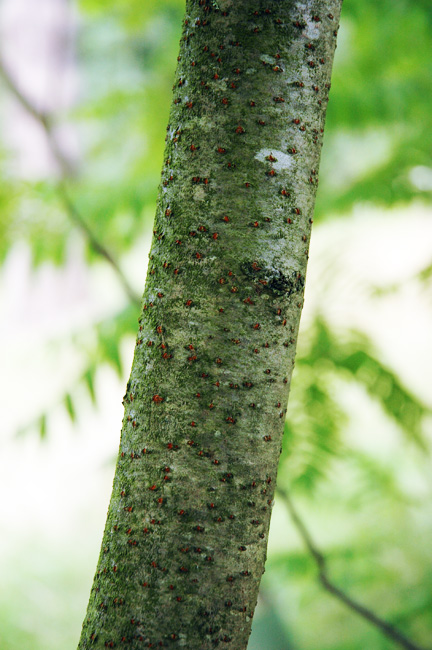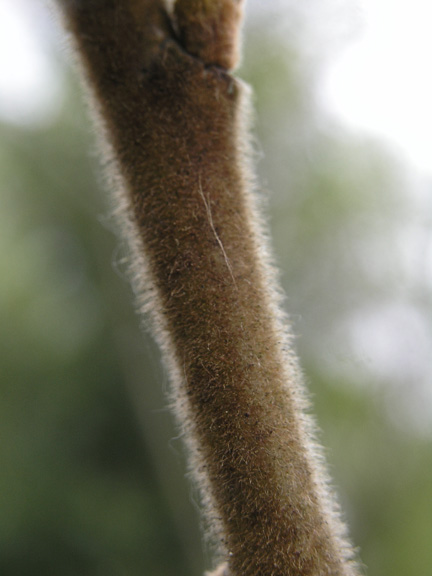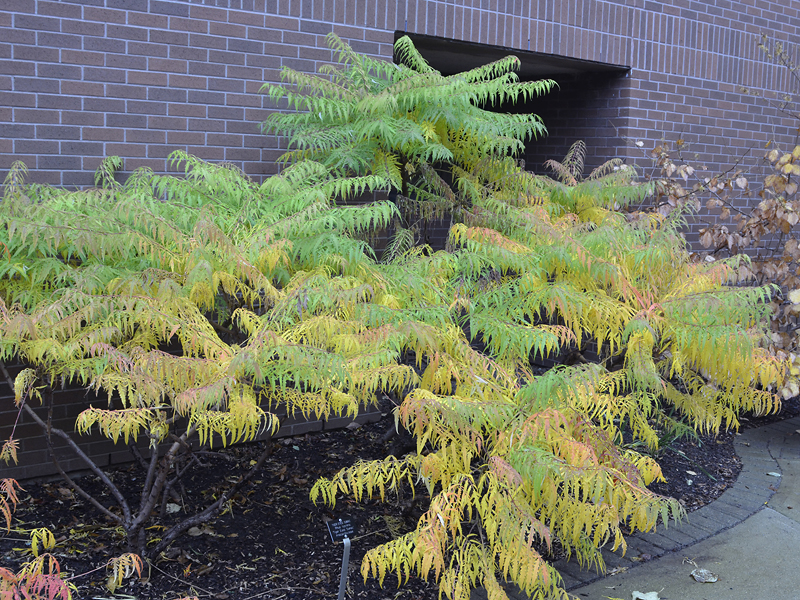| General Description | A native shrub suitable for quick screening and naturalizing. Used as a specimen in contained areas. |
| ID Characteristic | Bright green foliage, crimson fruit clusters, wide spreading and its branches are covered in dense velvet hair. |
| Shape | Wide and spreading. |
| Landscape | Naturalizing, massing, waste areas, perhaps banks, cuts and fills. It is hard to kill this plant due to its ability to sucker freely from the roots. |
| Propagation | Seed, scarify for 50-80 minutes in sulfuric acid. Root cuttings collected in the autumn and cut into 50 mm lengths, insert vertically into pots or flats barley covering the top. Water and place in a cold frame until growth appears and then pot individually. |
| Flower/Leaf Bud Description | Hairy, leaf scars are 'C'-shaped. |
| Leaf Description | Compound pinnate, alternate and contains 13-27 leaflets. Bright green above, glaucous beneath. |
| Flower Description | Dioecious, females borne in dense, hairy panicles and male in a bigger, looser, wider panicle. Greenish-yellow in colour. |
| Fruit Description | Densely hairy drupe, closely packed with in a pyramidal panicle. Bright crimson in early autumn, becoming duller and darker red with cold weather and often still colourful even into the spring. |
| Colour Description | Bright green in summer, yellow, orange and scarlet in autumn. Flowers are greenish-yellow and fruit is scarlet red. |
| Texture Description | Medium in summer and coarse in the winter. |



.jpg)

.jpg)

